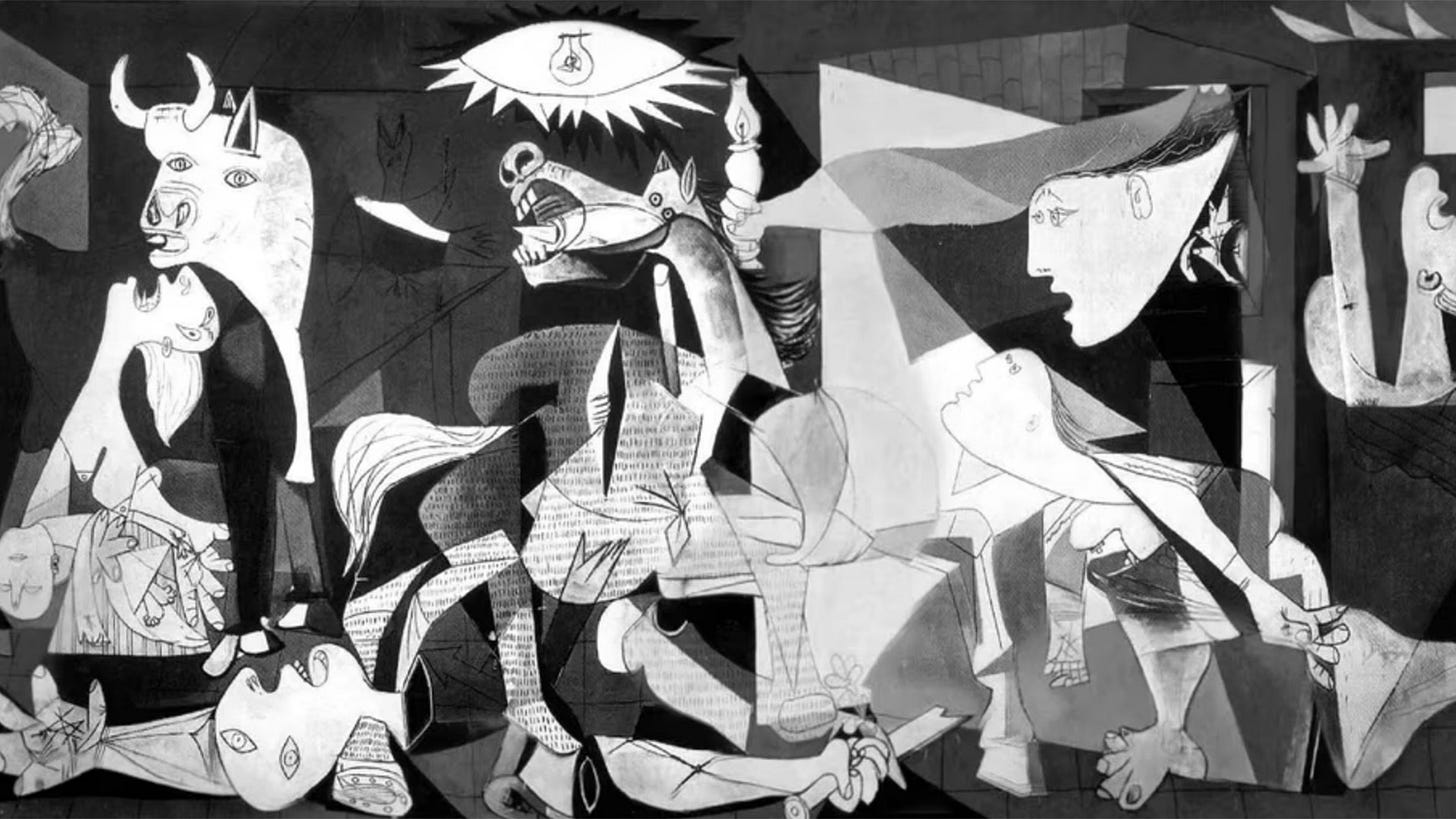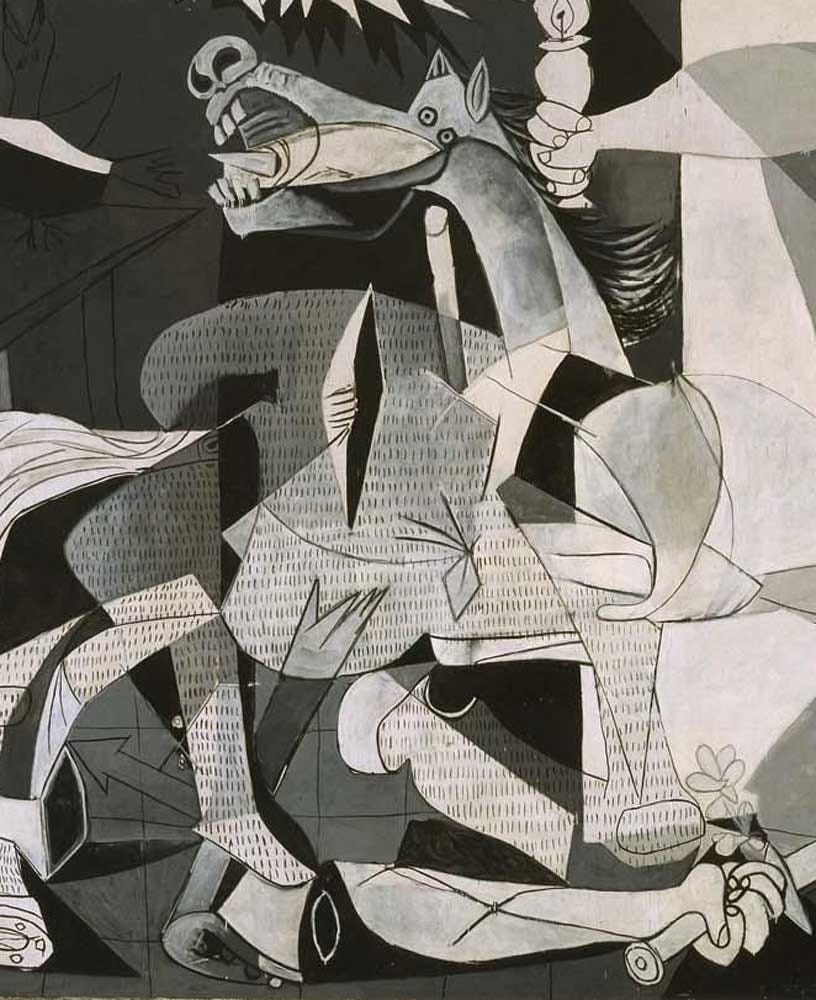Guernica
Picasso unleashed an image so raw, so essential, it became the century’s visual conscience.
Paintings, sculpture and other art found in a museum, rarely moves me to tears But on a recent visit to Madrid’s Reina Sophia museum, I stood before a masterpiece, moved to tears.
It was as if someone dropped a bomb inside a monastery—quiet, sacred, then suddenly obliterated.
I walked into the Museum with a tourist’s nonchalance—mildly caffeinated, eyes half-glazed from shuffling through elegant hallways and polite masterpieces. You know the routine. “Ah, yes, a Velázquez.” Nod. “Hmm, Goya.” Chin rub. “Hey, my man Salvador Dali and the melting clock.” But then I turned a corner and ran straight into Guernica.
And everything stopped. My breath. My thoughts. Time.
There it was. Monolithic. Merciless. A black-and-white hellscape swallowing an entire wall, a slab of visual thunder announcing: This is what war feels like.
Not looks like. Feels like. And that will never change.
The Painting That Howls
No color. No comfort. Just pure, distilled anguish, splintered into Cubist shards and smeared across 25 feet of raw humanity.
There’s a bull staring straight through you like it knows where you’re broken. A mother, her mouth an open wound, holding her dead child—an image so primal I could hear it wailing across the centuries.
A horse pierced by a javelin, buckling in absurd agony, its eyes popping like a cartoon gone wrong.
A twisted soldier’s hand grips a broken sword, a flower blooming helplessly nearby.
It’s not a painting. It’s a psychic detonation.
I felt like I was being pulled into the canvas. Not physically. Spiritually. Like each figure was a shard of myself—screaming, gasping, begging for light in the face of chaos.
I actually had to sit down. There I was, a grown man with jazz in his soul and decades of life under his belt, nearly weeping on a museum bench in front of the canvas. Because that’s what Guernica does—it bypasses the intellect and knifes straight into your nervous system.
Guernica was Picasso’s response to a Nazi-backed airstrike in 1937 on a small Basque town of the same name—an attack that left civilians mangled and memories scorched. It was a test-run for Hitler’s bombing techniques. Franco invited the carnage. The world barely blinked.
But Picasso didn’t. He picked up a brush and declared war on the very idea of war.
He didn’t bother with realism. He weaponized abstraction. Bulls, horses, hands, babies—each a totem of pain, cobbled together like a shattered mirror. You want truth? Here’s truth without the sugar. Here’s truth with its teeth bared.
And seeing it in person… It’s not like seeing it online, where you can scroll past it, toss it a heart, and get back to your dopamine drip. No, this thing confronts you. It grabs your soul by the collar and screams, LOOK.
I walked out of that museum shaken, as if I’d been inside a scream that lasted seventy years and continues to this very day.
That’s what great art is supposed to do. Not comfort. Not entertain. Not even enlighten. Just rearrange your molecules so you can’t walk through the world the same way again.
And if you ever get the chance… don’t look at it.
Let it look at you.
#
Until we meet again, let your conscience be your guide.








That photo of the actual city could be Palestine.
A lot of days I wake up composing an op-ed that never gets past, “Dear Israel, Stop killing the children…”
Your piece is that op-ed complete.